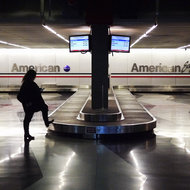HONG KONG — The National Audit Office of China said Sunday that it would conduct a broad audit of debts incurred by government agencies, in the latest sign of Beijing’s concern that heavy borrowing by local governments and their affiliates might pose a broader threat to the economy.
The audit office issued a single-sentence statement saying that it had been instructed by the State Council, or cabinet, to carry out the audit.
Western economists have estimated total local government debt in China at $2 trillion to $3 trillion and rising.
China avoided most of the effects of the recent global financial crisis through a huge program of government spending financed by debt. The stimulus program has encompassed projects ranging from a national grid of high-speed train routes to the construction of thousands of roads and bridges by municipalities, towns and villages.
In an interview last month with the Web site of People’s Daily, a deputy head of the fiscal audit section of the National Audit Office said that since last year, the outlook for the economy as a whole, and for government revenue in particular, has “not been too sunny.”
“Under these circumstances, how to avert financial risks is quite an urgent issue, said the official, Ma Xiaofang.
Those concerns have already prompted the office to audit 36 local governments this year, following a similar check in 2011, Mr. Ma said. “We must have more insight into problems, risks and hazards in local government debt management,” he said.
China has made periodic efforts over the years to assess the scope of local government debt, and Sunday’s statement by the National Audit Office was too terse to be clear about how comprehensive the latest effort would be. Bankruptcy proceedings started this month by the City of Detroit have surprised and alarmed many in China, however, prompting renewed concern about the financial health of Chinese cities and towns.
While the Chinese government has considerable unused borrowing capacity at the national level as well as $3 trillion in foreign exchange reserves, any move by the central government to bail out profligate local governments would be politically contentious within China.
Using the foreign exchange reserves to cover local government debts would also be extremely difficult for practical reasons. The central bank has financed those reserves mostly by borrowing money from Chinese commercial banks and needs to be able to repay these banks.
Beijing imposes many restrictions on the ability of local governments to borrow at all. But local governments have been widely sidestepping these restrictions by setting up special financing entities that borrow the money for them.
Many local governments also own businesses and have used their political connections to help these businesses obtain loans from state-owned banks. This has further increased possible financial liabilities for the local governments themselves.
These governments’ revenues tend to be heavily dependent on the sale to developers of long-term leases for government land, which is then used for building apartment towers, factories, shopping malls and other projects.
Developers’ interest in these leases tends to be highly cyclical, soaring when the real estate market is strong and crashing when real estate prices fall. With Beijing trying to improve the affordability of housing for the past couple years by limiting real estate speculation, developers have been more cautious about acquiring further leases.
Many local governments have also guaranteed loans to borrowers in politically favored sectors like solar panel manufacturing. That allows the borrowers to obtain loans at extremely low interest rates. But the local governments are then exposed to huge losses if the borrowers default — a constant risk given the overcapacity and declining profit margins that bedevil many Chinese industries.
“These problems must attract serious attention, and there should be effective measures taken to strengthen management of local government debt,” Mr. Ma said.

Article source: http://www.nytimes.com/2013/07/29/business/global/broad-audit-of-chinese-government-agencies-set.html?partner=rss&emc=rss

